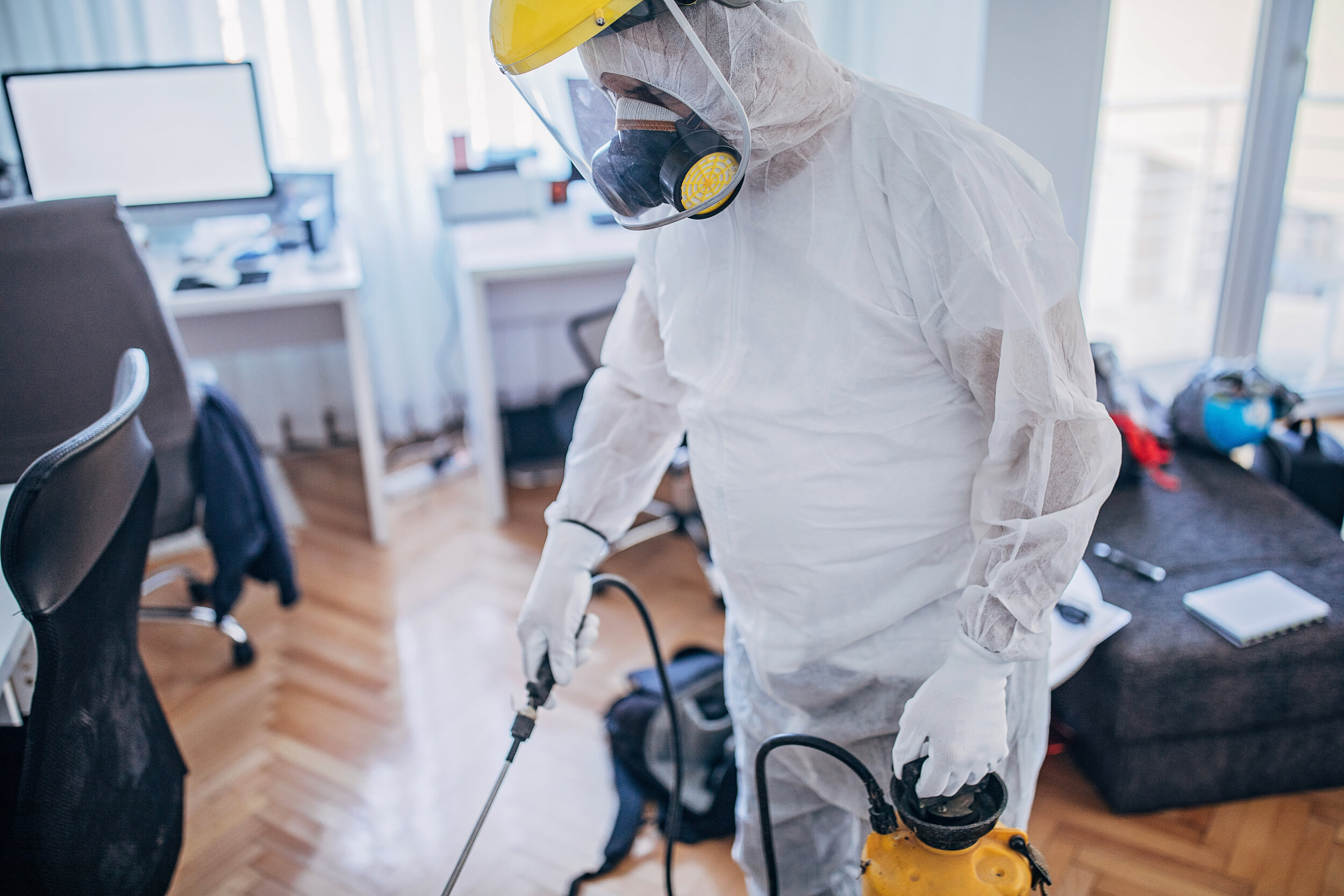Sewage backups and spills are unpleasant and a health risk for you, your family, pets and guests. The bacteria that causes these issues spread quickly and can make you sick if not dealt with immediately.
You should not enter any area flooded by sewage until it has been cleaned and sanitized by professionals. Contact a professional plumber to locate and fix the cause of the sewer backup.
Also Read: Houston Air Duct Cleaning Speed Dry USA
Preparation

Sewage contains pathogens that can be dangerous to people, so it’s critical to limit exposure to contaminated areas and items. During the preparation phase of sewage cleanup, employees should be provided with personal protective equipment and be trained for contaminated material removal and cleaning. This should include the use of a HEPA-rated respirator/mask, rubber gloves and eye protection. Any tools used in the cleanup should be thoroughly rinsed and disinfected after each use to prevent re-contamination of other materials or workers. Porous materials exposed to sewage should be removed and disposed of immediately. This includes carpet and carpet padding, drywall, wood and other absorbent materials.
Ideally, the sewage spill should be contained to a small area to minimize contamination and damage to the building structure and furnishings. If this is not possible, then the affected area should be cordoned off to keep children and pets away from the sewage. Furniture, plants and other large objects can then be moved away from the sewage area and, depending on their degree of contamination, may need to be taken away for professional disinfection or thrown away.
It’s important to get the water supply turned off as soon as a sewage backup occurs, which will help prevent further overflow and flooding. It’s also important to take measures to ensure that all drains and sewer lines are unblocked, so that the sewage can flow freely away from the establishment.
If the sewage is on nonabsorbent surfaces, such as tile, vinyl or concrete, it should be vacuumed up and then sanitized with an appropriate concentration of sanitizers. Absorbent floor materials like carpet, rugs or pad should be removed and discarded as they are unable to be adequately cleaned.
Any food stored in the affected area should be thrown out, as will any utensils, dishes and other equipment that came into contact with the sewage. This can be done by a licensed waste disposal company that is qualified to handle contaminated materials. Any clothes that have been in contact with the sewage should be removed, cleaned as best as possible, and then washed on a hot wash setting.
Cleaning
 Sewage water contains bacteria and other pathogens that are harmful to human beings. These microorganisms can cause a wide variety of health issues, including E coli, hepatitis A, and even encephalitis. Therefore, it is important to protect yourself during the sewage cleanup process. Wearing personal protective equipment (PPE) such as an N95 face mask, safety goggles, and thick rubber gloves will reduce your exposure to contaminated sewage.
Sewage water contains bacteria and other pathogens that are harmful to human beings. These microorganisms can cause a wide variety of health issues, including E coli, hepatitis A, and even encephalitis. Therefore, it is important to protect yourself during the sewage cleanup process. Wearing personal protective equipment (PPE) such as an N95 face mask, safety goggles, and thick rubber gloves will reduce your exposure to contaminated sewage.
You should also disinfect any materials that come into contact with sewage. Disinfectants with a 1 percent quaternary ammonium compound are effective in eliminating or reducing the severity of bacterial contamination. Examples of such disinfectants include Jasol Green Pine and Accent.
Any absorbent materials that came into contact with sewage should be removed and bagged for disposal. This includes drywall, carpets, and any other materials that were saturated with sewage water. Items that can be saved after the sewage cleanup process include clothing, towels, and bedding. It is advisable to wash these materials with hot water, disinfectant, and detergent.
If possible, open windows and doors in the affected area to air out the space. This will help improve the air quality and speed up the drying process. Make sure to close these spaces after the cleanup is complete. This will ensure that sewage contaminated dust and dirt does not get tracked into other areas of the home and that sewage odors do not permeate the whole house.
It is crucial to understand that the cleanup process for a sewage backup or spill is lengthy and complicated. It is best to hire a professional cleaning and restoration company who has the necessary tools and knowledge to safely handle these types of jobs.
If you have a large amount of sewage in your yard, it is best to call in the professionals. They will have the proper equipment and trucks to pump out the sewage and dispose of it properly. They will also use a disinfectant to kill any remaining bacteria and odors in the yard. It is also important to notify your insurance company so they can help you recover from the damage caused by sewage.
Extraction
If your property experiences a raw sewage backup, you will need immediate help to avoid the dangers associated with it. The contaminated water contains harmful pathogens like bacteria, viruses, fungi and microbes, which can be fatal if exposed to for extended periods of time.
Sewage backups often occur when the sewer system becomes overloaded with solid waste. Items like food fat, cotton swabs and wipes are often flushed down toilets without being disposed of properly, causing blockages that prevent the water from flowing correctly through the pipes. If the water infiltrates your home, it can cause severe damage to your property and pose health risks for the young, elderly, and those with compromised immune systems.
Raw sewage contains bacteria and pathogens that can contaminate all areas of your home, including the inside of appliances, carpeting, walls and ceilings. As such, you should evacuate your property and call a professional immediately to address the situation.
A professional sewage cleanup company will use the latest tools and equipment to safely remove all contaminated materials from your property. They will begin with a thorough assessment of the area plus containment measures to stop the contamination from spreading into unaffected areas. Then, they’ll pump out the sewage and dispose of it at an approved location. They’ll also remove and discard all absorbent materials, such as fabrics and carpets, that came into contact with the contaminated water.
If you have a crawl space that has been affected by sewage, you can minimize toxic fumes by sealing the area and blocking off the crawl space door with plastic sheeting. If possible, attach the plastic sheets to the joists to keep them in place. If not, you can try to minimize the toxic fumes by using a large-capacity shop vac.
Disinfection

Sewage backups, even if they only affect a small area of a room, require that everything that came into contact with the sewage be disinfected. In addition, the water that seeped into the building should be drained. If you can’t afford to have all the affected materials professionally cleaned and disinfected, then they should at least be removed from the contaminated area so that their damage can be assessed and remedied.
The first step in disinfection is to wash the contaminated surfaces with a solution of one capful of 5.25 percent chlorine bleach per gallon of water. This solution should also be used to rinse mops, brooms and brushes used during clean-up. Then, to prevent mold growth and reduce odors, open all windows and doors to allow air circulation. If possible, use fans to help speed the drying process.
Next, dispose of all clothing and other items that have come into direct contact with sewage. Then disinfect any mops and other tools that were used in the contaminated area with the chlorine bleach solution. Also, disinfect any sinks and other plumbing fixtures that were in the contaminated area. Finally, disinfect floors that have been impacted by the sewage with a mixture of equal parts of bleach and water.
Unless you are an experienced professional, you should not attempt to disinfect crawl spaces or other insulated or confined areas. The conditions in these spaces are prone to mold, mildew and other conditions that can be difficult or impossible to clean. If you have a problem with sewage backing up into your home, call in an expert to assess the situation and perform the required clean up and disinfection.
In addition to the basic clean up and decontamination procedures described above, a professional restoration company may advise you to take additional steps, such as:



